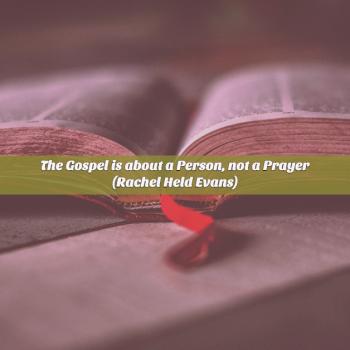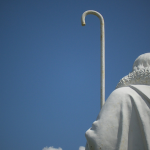*The following is a guest book review by Lawrence Gracia. Kurt does not necessarily endorse all of its content. Enjoy!
It is quite fascinating that among the thousands of ignominious crucifixions performed by the Romans within the first-century, either side of Jesus of Nazareth, that his and his alone, set forward a chain of events that would go on to forever alter history. That within decades, Jesus’ fate on the “dreaded wood” as they called it began to be interpreted as everything from a cosmic sacrifice for sins to that of God’s great act of faithfulness to the Abrahamic covenant begs for the historian and theologian alike to make sense of the matter. Especially, as to exactly how and on what terms Jesus himself may have understood his possible demise. It is this great historical question that Scot McKnight’s Jesus and His Death: Historiography, the Death of Jesus and Atonement Theory seeks to answer. McKnight asks:
Did Jesus think he would die prematurely? If so, what point in his life did that occur to him? from the outset? Following the death of John the Baptist? After he was opposed by the leaders? Or, only after he entered Jerusalem that last week? Furthermore, did Jesus think about his death in saving terms? Did he think it was of more than martyrological value or not? And if not, what are we to make of the continued witness of the church to the atoning value of his death?
Of course, to answer such questions in a postmodern world McKnight must face the charge that the modernist historical quest of a century ago is said to be a historian’s power play that is “all rhetoric, all discourse, all language, and in effect all autobiography.” In order to refute this charge McKnight navigates the terrain between the trenches of modernist and postmodernist historiographical theory concluding that what is needed in this era of historiography is a “chastened post-modernist modernism,” a sort of modernist quest that now knows “our narratives are not equivalent with the past, and they (postmodernists) remind us that our narratives need to be held lightly with the obvious potential of being revised and even jettisoned, but they cannot steal from us this: that our narratives either more or less cohere with what we can know about existential facts and their contexts in such a way that we can derive a narrative that approximates truth.” A satisfactory answer if you ask me. Moreover, I was pleasantly surprised that this historical quest wasn’t necessarily going to be a skull and bones re-presentation—a sort of lowest-common denominator of what the historical method has left over, once having devoured the Gospel tradition. Rather, McKnight’s proposal would be a narrative representation that considers the evidence guided, as it were, by a hermeneutic of love that operates on a basis of trust rather than a priori suspicion.
Having dealt with the historical question McKnight’s Jesus and His Death goes on to evaluate the various proposals of scholars concerning how Jesus may have perceived his own death, ranging from Schweitzer’s wheel of the great Tribulation to the suffering servant motif championed by T.W. Manson. All in route to the central question, “How is it possible for a Jew who believed in God’s sovereign and providential care, who surely believed that God had accomplished forgiveness through the sacrificial system of the temple—especially Yom Kippur, and who preached the arrival of the long expected kingdom that was interrelated to these themes about God and forgiveness—how it even possible, we must ask, for such a person suddenly to think his death was the sacrifice of all sacrifices, the end of the temple system, and a sure atonement for all people?” This question brings to surface the possibility that the church’s soteriological interpretation of Jesus’ crucifixion may have differed from how Jesus may have conceived the matter. McKnight writes:
It matters, then, to many creedal Christians that Jesus’ death occurred and for some it matters what Jesus thought of his death. It matters for some, too, that what early Christians thought about the death of Jesus is in some sense consonant both with what happened and with what Jesus thought of his death. Was his atonement theology arbitrarily imposed on the Jesus traditions or was it organic evolution from the Master himself?… To the texts we now must turn.
It is when we turn to the texts themselves armed with our hermeneutic of trust yet not without a critical eye to what may be later theological imposition that we can begin to reconstruct how Jesus may have understood his own death. McKnight argues that the place to begin is with what can be properly labeled the “bookends” of orientation. These, for McKnight, are to be located in the sixth request of Matthew’s “Our Father” prayer where Jesus petitions God to “lead us not into temptation,” and the Gethsemane prayer in Mark where in the context of “test/temptation” Jesus requests that his Father remove the “cup.”
Once we understand that the “testing” wasn’t what we usually regard as an individual temptation to sin, but rather the great time of testing that was to befall Israel in the end of days preceding the final kingdom of God, we can begin to uncover the framework of how Jesus saw his own fate within the final chapters of Israel’s story. Jesus, for sure, had already considered his probable fate after John the Baptist met a bad end under Herod Antipas. Thus, as a “Scripture prophet” Jesus began combing the Scriptures to “lend significance to his death” landing on prophets like Daniel, Zechariah, and possibly Isaiah to identify the tenor and tone for his forthcoming death. McKnight goes on to write:
Jesus sees in his death a foretaste of the imminent judgment of God on the city of Jerusalem for recalcitrance. Thus, he sees his fate and Jerusalem’s fate tied together, perhaps so closely that one speaks of the other. The eschatology inherent in such an understanding of Jesus, and his desire for the city to turn from its ways confirm the interpretation offered. Jesus evidently, at this time, in his life sees no hope for the city to turn; the judgment is inevitable, and he will go down as part of the city’s defeat.
All of this plays out when Jesus marches his way south to Jerusalem for what he perceived as the final Passover/Pesah, what for him would essentially be a new Exodus. Jesus, however, would take the role of the sacrificial victim allowing those who participate in his death to “be redeemed from the affliction” when God passes over them to judge unfaithful Israel. This plausible historical-narrative representation makes sense of why the early church began to attach unheard-of theological significance to Jesus’ death, not because they created it ex nihilo, but precisely because Jesus himself set the precedent of attaching grand theological significance to his death. Thus, the high views of Jesus’ death witnessed in the prologue of John or the first two chapters of Hebrews is not antithetical to Jesus’ vision of his own death, but organically linked to it.
Surprisingly, McKnight’s book doesn’t end there. Before concluding, he goes on to examine the various interpretations of Jesus’ death throughout the rest of the New Testament. This brief excurses, filled with outstanding insight, reads like theological icing on the historiographical cake. Over all, this book is a serious piece of history that can sit on the shelf next to the New Testament, lending it historical nuance and insight. If one desires to grapple with a sound historical enquiry into how Jesus may have understood his own fate then I highly recommend this book.
—————————————————————–
Lawrence is the Senior Teaching-Pastor of Academia Church in Goodyear, Arizona. He is a pastor devoted to the educational growth of his congregants, and the raising up of a new generation of disciples, who will think, tell, and live out the Christian story. Lawrence is currently attending Liberty University.
















